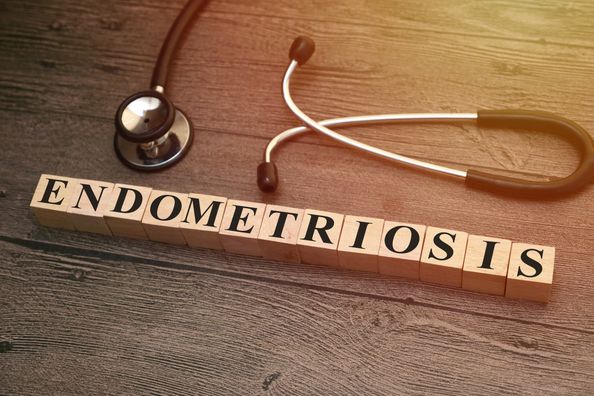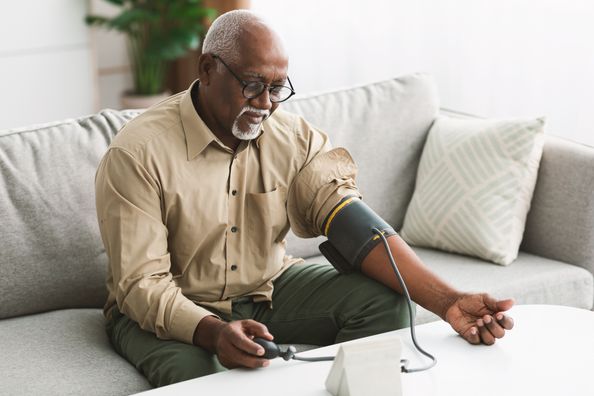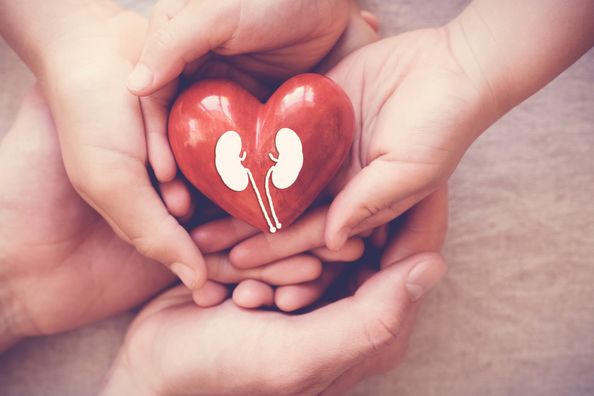March: Endometriosis Awareness Month
Dr. Tanya Mero, a gynecologist in Quincy Medical Group’s Women’s Health Center, shared information about endometriosis and treatment options for it on KHQA-TV’s “This Morning” program (March 6, 2020). For more information, Dr. Mero recommends the following frequently asked questions (FAQ) from the American College of Obstetricians and Gynecologists (ACOG). Watch her interview at https://youtu.be/O7tn9cUk0vI.
What is endometriosis?
Endometriosis is a condition in which the type of tissue that forms the lining of the uterus (the endometrium) is found outside the uterus.
How common is endometriosis?
Endometriosis occurs in about one in 10 women of reproductive age. It is most often diagnosed in women in the 30s and 40s.
Where does endometriosis occur?
Areas of endometrial tissue (often called implants) most often occur in the following places:
- Peritoneum
- Ovaries
- Fallopian Tubes
- Outer surfaces of the uterus, bladder, ureters, intestines, and rectum
- Cul-de-sac (the space behind the uterus)
How does endometriosis cause problems?
Endometriosis implants respond to changes in estrogen, a female hormone. The implants may grow and bleed like the uterine lining during the menstrual cycle. Surrounding tissue can become irritated, inflamed, and swollen. The breakdown and bleeding of this tissue each month also can cause scar tissue, called adhesions, to form. Sometimes adhesions can cause organs to stick together. The bleeding, inflammation, and scarring can cause pain, especially before and during menstruation.
What is the link between infertility and endometriosis?
Almost 40% of women with infertility have endometriosis. Inflammation from endometriosis may damage the sperm or egg or interfere with their movement through the fallopian tubes and uterus. In severe cases of endometriosis, the fallopian tubes may be blocked by adhesions or scar tissue.
What are the symptoms of endometriosis?
The most common symptom of endometriosis is chronic (long-term) pelvic pain, especially just before and during the menstrual period. Pain also may occur during sexual intercourse. If endometriosis is present on the bowel, pain during bowel movements can occur. If it affects the bladder, pain may be felt during urination. Heavy menstrual bleeding is another symptom of endometriosis. Many women with endometriosis have no symptoms.
How is endometriosis diagnosed?
A healthcare professional first may do a physical exam, including a pelvic exam. However, the only way to tell for sure that you have endometriosis is through a surgical procedure called laparoscopy. Sometimes a small amount of tissue is removed during the procedure. This is called a biopsy.
How is endometriosis treated?
Treatment for endometriosis depends on the extent of the disease, your symptoms, and whether you want to have children. Endometriosis may be treated with medication, surgery, or both. When pain is the primary problem, medication usually is tried first.
What medications are used to treat endometriosis?
Medications that are used to treat endometriosis include pain relievers, such as nonsteroidal anti-inflammatory drugs (NSAIDs), and hormonal medications, including birth control pills, progestin-only medications, and gonadotropin-releasing hormone agonists. Hormonal medications help slow the growth of the endometrial tissue and may keep new adhesions from forming. These drugs typically do not get rid of endometriosis tissue that is already there.
How can surgery treat endometriosis?
Surgery can be done to relieve pain and improve fertility. During surgery, endometriosis implants can be removed.
Does surgery cure endometriosis?
After surgery, most women have relief from pain. But there is a chance the pain will come back. About 40 – 80% of women have pain again within two years of surgery. This may be due to endometriosis that was not visible or could not be removed at the time of surgery. The more severe the disease, the more likely it is to return. Taking birth control pills or other medications after having surgery may help extend the pain-free period.
What if I still have severe pain that does not go away after I have had treatment?
If pain is severe and does no go away after treatment, a hysterectomy may be a “last resort” option. endometriosis is less likely to led to future pain if your ovaries are removed at the time of hysterectomy. Either way, the goal of surgical treatment is to remove as much as possible of the endometriosis that is found outside the uterus.
Glossary
Adhesions: Scars that can make tissue surfaces stick together.
Biopsy: A minor surgical procedure to remove a small piece of tissue. This tissue is examined under a microscope in a laboratory.
Bladder: A hollow muscular organ in which urine is stored.
Endometriosis: A condition in which tissue that lines the uterus is found outside of the uterus, usually on the ovaries, fallopian tubes, and other pelvic structures.
Endometrium: The lining of the uterus.
Estrogen: A female hormone produced in the ovaries.
Fallopian tubes: Tubes through which an egg travels from the ovary to the uterus.
Gonadotropin-releasing hormone agonists: Medical therapy used to block the effects of certain hormones.
Hormone: A substance made in the body that controls the function of cells or organs.
Hysterectomy: Surgery to remove the uterus.
Infertility: The inability to get pregnant after one year of having regular sexual intercourse without the use of birth control.
Inflammation: Pain, swelling, redness, and irritation of tissues in the body.
Laparoscopy: A surgical procedure in which a thin, lighted telescope called a laparoscope is inserted through a small incision (cut) in the abdomen. The laparoscope is used to view the pelvic organs. Other instruments can be used with it to perform surgery.
Ovaries: Organs in women that contain eggs necessary to get pregnant and make important hormones, such as estrogen, progesterone, and testosterone.
Pelvic exam: A physical examination of woman’s pelvic organs.
Peritoneum: The membrane that lines the abdominal cavity and surrounds the internal organs.
Progestin: A synthetic form of progesterone that is similar to the hormone made naturally by the body.
Rectum: The last part of the digestive tract.
Ureters: A pair of tubes, each leading from one of the kidneys to the bladder.
Uterus: A muscular organ located in the female pelvis. During pregnancy this organ holds and nourished the fetus.
Note: This information is from the American College of Obstetricians and Gynecologists. Please see https://www.acog.org/-/media/For-Patients/faq013.pdf.
Health Topics:







